New Jersey Butterfly Club
A chapter of the North American Butterfly Association (NABA)
Brown Elfin
Callophrys augustinus
Identification: Very small (between size of Eastern Tailed-Blue and Banded Hairstreak). Almost never seen with wings open. Below: Rich, reddish-brown with some iridescence when fresh. Lighter on outer half of hindwing. No obvious white markings and no marginal frosting.
NJ Status and Distribution: Resident. Occurs throughout the state—generally uncommon and local in North Jersey but considerably more widespread in the southern counties.
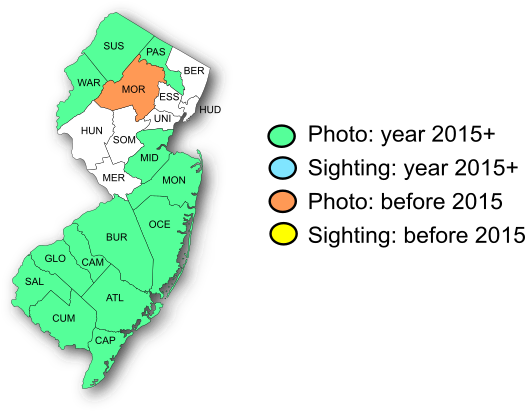
Habitat: Dry, open, often rocky areas near woods with food plants.
Flight Period: One brood from early April to early June. Extreme dates: North Jersey 3/26—6/7; South Jersey 3/23—5/30.
Caterpillar Food Plants: Many plants in the Heath Family (Ericaceae), but especially lowbush blueberries (Vaccinium) and huckleberries (Gaylussacia).
Overwintering Stage: Pupa.
Good Locations: Crater Lake Road (Delaware Water Gap NRA), Appalachian Trail to Millbrook Fire Tower, Ramapo Mountain SF, Julian L. Capik Nature Preserve, Belleplain SF, Warren Grove RA.
Comments: A plain little butterfly that nonetheless is a joy to see in the spring. Likes to nectar on spurges (Euphorbia), lowbush blueberries, and huckleberries. Brown Elfins are not flashy, so you must look carefully to spot them.
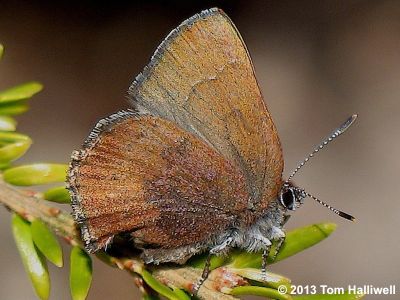
Crater Lake Rd., Sussex Co., NJ, 4/19/06.
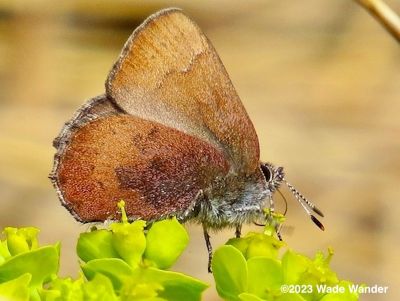
Sussex Co., NJ, 5/5/18.
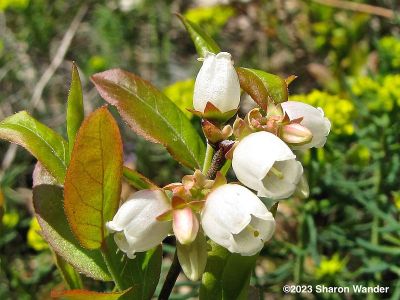
Lowbush Blueberry (V. angustifolium), a caterpillar food plant for Brown Elfin, grows in colonies in dry woods.
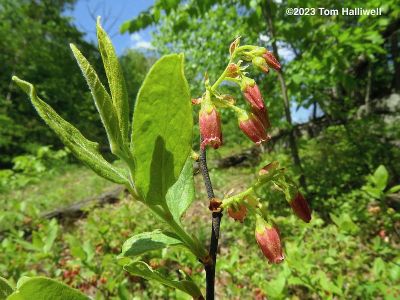
Generally taller than the lowbush blueberries, Black Huckleberry (G. baccata) is also a caterpillar food plant for Brown Elfin.